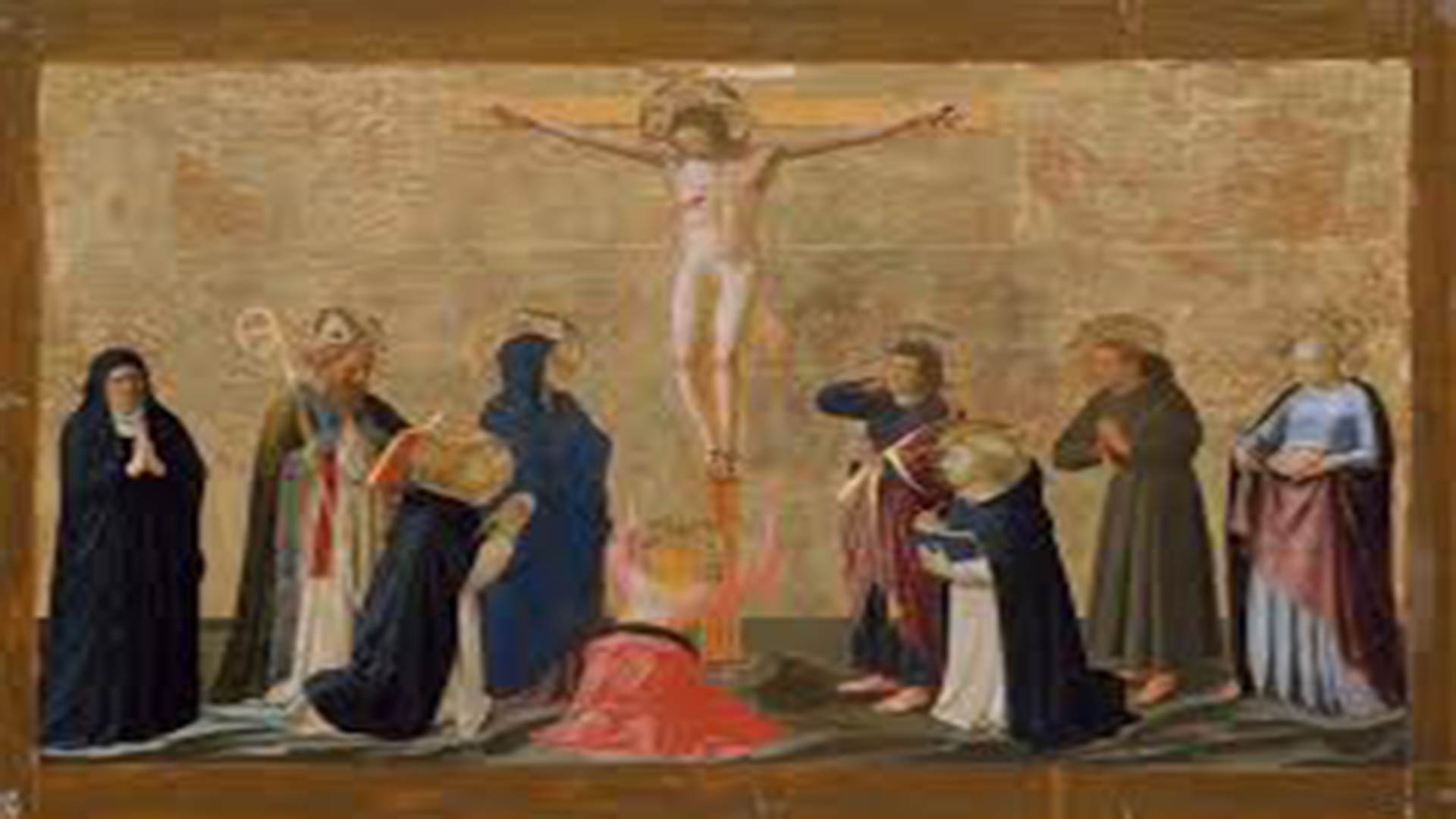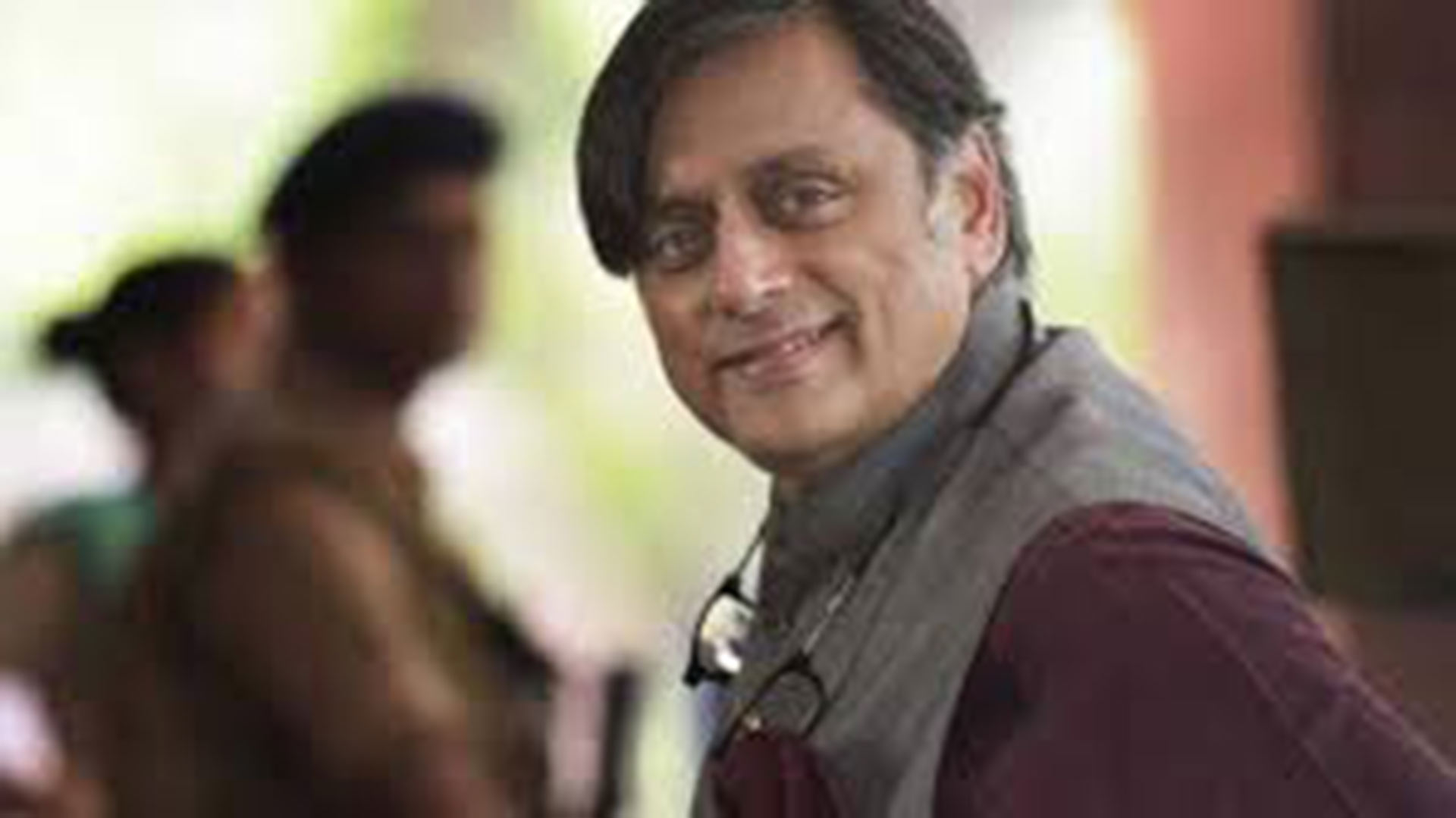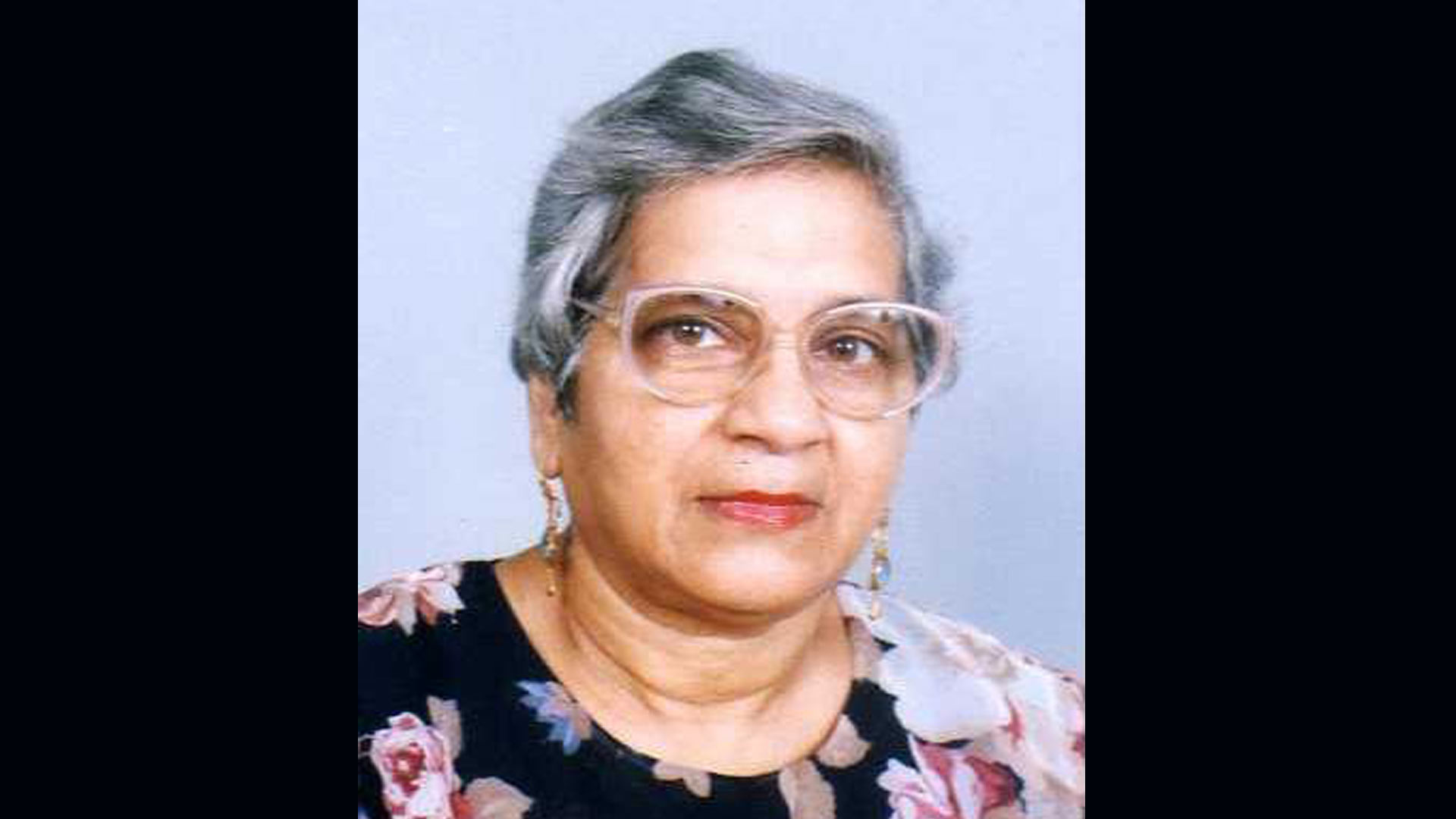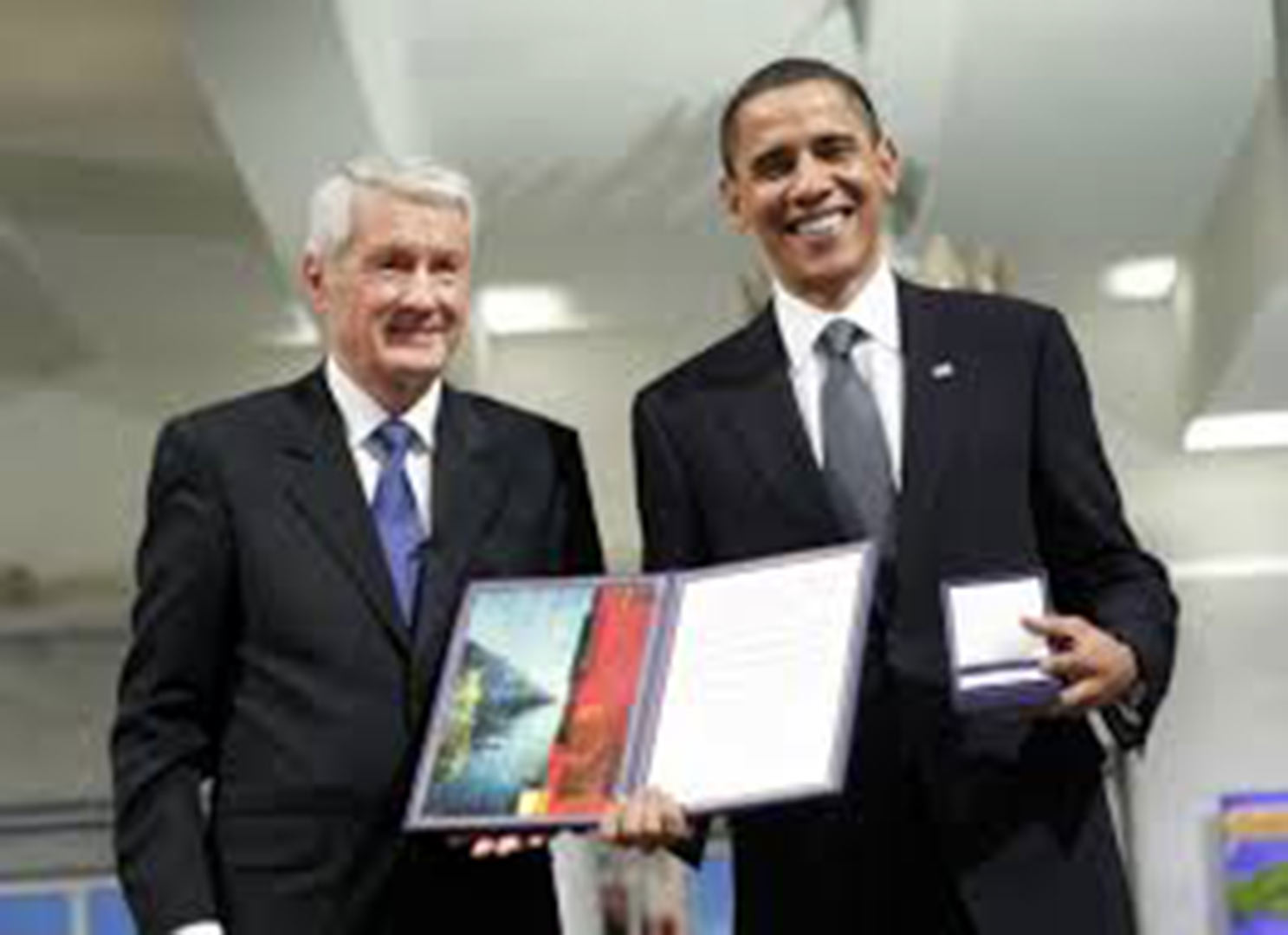Divine Spokesman
May 1, 2011Gorbachev,Nazi regime,Karol Józef Wojtyla,Pope John Paul II,Feast of Divine Mercy,Crossing the Threshold of Hope,St John of the CrossTribute,Pope
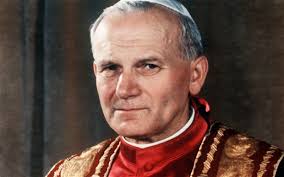
The Pope is, by God’s design, a man for his times. As regards Karol Józef Wojtyla, after the initial public scepticism, it became clear that his every facet was a response to the world order of the last quarter of the twentieth century.
We can say without risk of mythologizing that KJW’s personal history matched up with the convulsive era in which he lived. Thanks to his profound faith and compassion, he identified the early loss of his close family[1] with his country’s troubled history. His sense of humour and sportsmanship helped him transform his hard labour under the Nazi regime into empathy for the human condition. His training for the priesthood in the underground seminary of Krakow endowed him with nerves of steel to eventually outwit a repressive political regime. His doctorate on St John of the Cross smoothed out his natural propensity for the ‘via negativa’; his second, on Scheler’s phenomenology, was an exploration into enhancing Christian ethics. By his longtime interest in theatre, he looked at the world as a stage, and later, his university teaching and successive appointments as bishop, archbishop and cardinal[2] gave him a vantage point on global affairs.

Probably it never occurred to KJW that one day he would be a key player on the world stage. His rise as ‘John Paul II’ in 1978 was indeed sensational: The first ever Pope of Slavic extraction and a non-Italian in 455 years brought palpable hope to far-flung Christendom while his unusually young age was a promise of long innings.[3] His intellectual baggage and experiential knowledge was set to make of his pontificate an ideological and political turning point, marked by healthy opposition, essential restoration and measured innovation.
His main opposition was to atheistic communism. As a passionate Marian (more intensely so after his miraculous escape from assassination attempts)[4] he simply pitted Mary against the Monster, becoming at once a challenge to the Soviet leadership and a beacon of hope to Eastern Europe. He endorsed the simmering anti-communist revolution; it was an initiative that won worldwide support, and amazingly, even from Russia. In Gorbachev’s words, “Everything that happened in these years in Eastern Europe would have been impossible without the presence of this Pope.”
These successes won Pope John Paul II great acclaim as a world statesman but he was essentially the bishop of Rome and the ‘universal pastor of the Church’, a new title that he assumed at the inauguration of his ministry. While he wielded politics and diplomacy with élan he remained at heart a man of intense prayer; he was the mystic behind the Iron Curtain, ensuring that the ‘dark night of the soul’ would steadily make way for the ‘ascent of Mount Carmel’. After dismantling totalitarianism in the East he denounced the liberal-capitalism of the West, proposing a renewal of Christian civilization as a whole. Hence his encyclicals speak as much about material realities[5] as they extol eternal mysteries[6]. All his interventions had a great liberating force; but perceiving the dark side of freedom at work inside the Catholic Church he also set about disciplined extremist theologians[7] and eventually restored Vatican to its preeminent position of moral and spiritual leadership.

Pope John Paul II became one of the most charismatic and influential leaders in our multi-cultural century. One of the most-travelled world leaders in history, the Pope-mobile and the kissing of the ground in the land he set foot on became two touching features of his pastoral journeys.[8] Over the years at the Vatican, he welcomed a great number of world dignitaries, and the most unlikely ones at that.[9] A brilliant linguist, and blessed with an uncommon sensitivity to the human person, he made Christ known urbi et orbi, formulating the thinking of the Catholic Church in a modern lingo, without compromising on principles.[10] No doubt he often received bouquets and brickbats either from progressives[11] or from conservatives and traditionalists[12]; but he treated them all with the same solicitude.
Pope John Paul II himself was perhaps a curious mix: by and large a conservative in faith and morals and a progressive in social and economic issues. He was a bold and innovative thinker[13] and, unlike most predecessors, who were reticent, he was also a prolific speaker and writer. His book Crossing the Threshold of Hope (1994) addressing major theological concerns of today became an international bestseller and further established him as a great intellect and teacher of our times. This divine spokesman had the ability to reach out to the flock, especially the youth and families. Perfectly at home with the modern media of communication, Time magazine named him the Man of the Year in 1994, while the people considered him the ‘Pope of the Century’ or even the ‘Pope of Popes’.

Pope John Paul II died a century upon the preliminary rumblings of communism, his bête-noire, and eve of the vigil of the Feast of Divine Mercy,[14] a prominent theme of his pontificate. Six years later, his beatification overshadowed communist-sponsored May Day,[15] vindicating his earthly mission; it also coincided with the said Feast whose great Promoter he had canonized. One can read in this divine esteem for the continual efforts that the Pope had made to spiritualize the world with the cult of saints and the message of mercy, peace and love. Significantly, the forgiveness that Pope John Paul II sought in the year 2000, for arguable ‘wrongdoings’ of the historical Church,[16] symbolized an earnest desire to enter the third millennium with a clean slate.[17]
Today, there is no longer room for scepticism; it is clear that God had designed that KJW with his unique background should be Pope, and that, in a globe fragmented by religious and political stances, he should speak in diverse yet not contradictory voices; when faced by hatred and strife, be unequivocal yet mellifluous; and, challenged by a humanity fast losing its religious sense, clinical in his assessment yet warm in his approach.
Endnotes
[1] He lost his mother at 8, his only brother at 11, and his father at 21 years of age.
[2] As a key figure at the II Vatican Council he became much better known internationally.
[3] Pope John Paul II (18/05/1920–02/04/2005) reigned as the 264th Pope from 16/10/1978- 02/04/2005. His was the second-longest pontificate after Pius IX's 31-year reign.
[4] On 13/05/1981, Pope John Paul II was shot at in St. Peter's Square by a Turkish gunman in the employ of the Bulgarian communist government. He recovered, resumed his work, and forgave his would-be assassin. In 1982, there was a second attempt, at Fatima, just a day before the anniversary of the first. In 1984, he consecrated the world (and not Russia, as per the Message of Fatima) to Mary. Also see his encyclical Redemptoris Mater (Mother of the Redeemer), 1987.
[5] Laborem Exercens (On Human Work), 1981; Sollicitudo Rei Socialis (On Social Concerns), 1987; Centesimus Annus (On the 100th anniversary of Rerum Novarum), 1991
[6] Redemptor Hominis (The Redeemer of Man), 1979; Dives in Misericordia (Rich in Mercy), 1980; Dominum et Vivificantem (The Lord and Giver of Life), 1986; Redemptoris Missio (The Mission of Christ the Redeemer), 1990; Veritatis Splendor (The Splendour of the Truth), 1993; Evangelium Vitae (The Gospel of Life), 1995; Fides et Ratio (Faith and Reason), 1998; Ecclesia de Eucharistia (On the Eucharist in its Relationship to the Church) 2003;
[7] Hans Kung (Switzerland), Edward Schillebeeckx (Belgium), Tissa Balasuriya (India), Leonardo Boff (Brazil), Gyorgi Bulanyi (Hungary), Jacques Pohier (France), C. E. Curran (USA), Bernhard Haring (Germany), Gustavo Gutierrez (Peru), among others, were banned for their unacceptable views on subjects ranging from papal infallibility and liberation theology to contraception. Similarly, discouraging priests and nuns from direct or full-time political activities, he ordered the American Jesuit Fr Robert Drinan to resign his office as congressman. He also excommunicated Archbishop Marcel Lefebvre for his acts of insubordination.
[8] The “Pilgrim Pope” made 104 foreign trips to 129 countries, more than all previous popes combined. He logged more than 1,167,000 km. He consistently attracted large crowds on his travels, some amongst the largest ever assembled in human history. While some of his trips (such as to the USA and the Holy Land) were to places previously visited by Pope Paul VI (the first Pope to travel widely), many others were to places that no Pope had ever previously visited.
[9] Political leaders like Mikhail Gorbachev and Yasser Arafat, among many others; and religious leaders of Christian denominations and other religions.
[10] Besides fourteen encyclicals, Pope John Paul II has to his credit several apostolic letters, exhortations, and books. Mention must be made of two significant publications under his tutelage: the Code of Canon Law (1983) and the Catechism of the Catholic Church (1997).
[11] They were critical of the Pope’s stance on artificial contraception, abortion, euthanasia, pedophilia, homosexuality and the ordination of women.
[12] They were critical of the Pope’s support to the II Vatican Council and its liturgical reforms as well as of his ecumenical efforts and inter-religious dialogue, whose supreme example was the meeting of world religious heads, which Pope John Paul II organized in Assisi in 1983. They also accused him of promoting Modernism, condemned as the “synthesis of all errors” by Pope Pius X.
[13] For instance, in Love and Responsibility (1960), which perhaps became a basis for Pope Paul VI’s Humanae Vitae, KJW dismisses the “utilitarian” view of sex for pleasure and the “rigorist” idea of sex for procreation. Instead, he sketched out a high doctrine of sexual intercourse as mutual self-donation. In his Theology of the Body (2006) Pope John Paul II broke new ground, inaugurating what many regard as a revolutionary shift in Catholic doctrine and sensibility.
[14] Pope John Paul II instituted this feast when he canonized Sr. Faustina Kowalska in the year 2000. It is now celebrated on the Sunday after Easter.
[15] Labour parades were cancelled in Poland in view of the Beatification.
[16] As the world crossed into the third millennium, Pope John Paul II magnanimously apologized to Jews; Galileo; Muslims killed by the Crusaders; victims of the Inquisition, and almost everyone who may have considered themselves victims of history. He also included the involvement of Catholics in the African slave trade; denigration of women; the burnings at the stake, and the indifference of many Catholics during the Holocaust.
[17] See the Apostolic Letter Tertio Millenio Adveniente, in preparation for the Jubilee Year 2000.
(Renovação, Vol. XL No. 9-10, 1-31 May 2011)
The Nails of the Crucifixion
April 22, 2011Jewish persecution,Crucifixion,Ronald Lauder,Steve Ray,Pope John Paul II,Pope Pius XII,Nostra Aetate,Pope Benedict XVIReflections,Holy Week

In the last month or so, several national governments came face to face with people’s wrath. Legitimate monarchs were in the firing line and some self-styled royals summarily ousted. Such things happen all the time in the rough-and-tumble of politics and are child’s play if we consider that, two thousand years ago, the Man who was God was crucified by his countrymen: The Creator of the Universe was destroyed, the Giver of Life put to death, the King of Kings who had deigned to visit his people, unceremoniously eliminated from the face of the earth.
Unlike worldly rulers, who collapse under the weight of their sins, Jesus Christ was executed without good reason. In fact, He was killed because He was righteous; He died to save us from the scourge of sin! What abnegation, what nobility! On the other hand, there were no prolonged hearings, no intention to ascertain the truth, no mercy…. There was only injustice, lies, brutality, ingratitude…. The annihilation of Jesus Christ was and will undoubtedly remain the worst crime perpetrated in history.
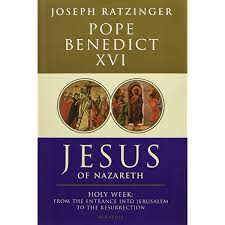
This was also an earth-shattering event for which the Chosen Race became accountable – alas, an irreversible act that the followers of Christ have had to painfully endure ever since. It caused them to have a mental block against the Jewish people; thankfully, neither the Church came to regard the Gospels as a basis for anti-Judaism nor did Christians hold out against individual Jews. Yet, the head of the World Jewish Congress, Ronald Lauder, recently accused the Christians of being silent spectators to the persecution of Jews.
Be that as it may, whether or not it was for the Jews to apologize to the Christians can be debated till the end of times. Without going into the long story of that failed relationship, it may be recalled that Pope Pius XII made efforts to mitigate the fall-out of what Churchill dubbed “a monstrous tyranny, never surpassed in the dark and lamentable catalogue of human crime.” In 1964, Vatican Council II issued a document, Nostra Aetate (‘In Our Times’), repudiating the notion of collective Jewish guilt for Jesus Christ’s death. Later, Pope John Paul II famously held out his hand to the Jews; and a couple of months ago, in his second volume of Jesus of Nazareth, Pope Benedict XVI ascribed that guilt not to “the Jewish people as a whole” but to the “aristocracy of the temple”, to the “masses” who acclaimed Barrabas, and to the Roman rulers who endorsed their demands.

The aggrieved Catholic Church thus moved beyond individual and racial considerations to ponder the greatest watershed in the history of humankind! The unparalleled magnitude of the crucifixion and death of Iesvs Nazarenvs Rex Ivdaeorvm (‘Jesus Christ, King of the Jews’, the INRI plaque on every crucifix) was an event infinitely more decisive than the fall of any emperor! As the Catholic apologist Steve Ray puts it, in Jesus’ death God “rewound history”: Eden became Gethsemani and Satan, Judas! Whereas at Eden death stuck into the Tree of Life, at Calvary life sprang up at the Tree of Death.
That speaks volumes about the centrality of Christ in meta-history. As we relive His saga, year after year, through the sorrowful spectacle of Lent and the glorious phenomenon that is Easter, we realize that we need no scapegoats. As members of the human race, you and I are those proverbial Jews and Romans, transposed across the centuries! Human nature has been the same for aeons; so, had we lived in Jesus’ time, maybe we would have been no different from those Jews and Romans! The Jew in us stands out even today, when we distort His teachings; and the Roman in us, when we hail the distortion. Our offences are the nails of modern-day Crucifixion; our rejection of the Message and the Messenger, an eloquent re-enactment of it!

We can turn a new leaf in our lives by repenting for our faults. Adam and Eve’s lapse was called felix culpa, a fortunate fault, because it eventually won us a great and good Redeemer. But our faults don’t qualify likewise; so we should first make a clean breast of our sins, saying: Nostra culpa, nostra culpa, nostra maxima culpa – Our fault, our fault, our very great fault! Next, we should readily embrace the Cross, not to invite suffering but to accept its myriad forms through the ups-and-downs of our daily life. Even a light feel of the Crucifixion on our skin might inspire us to atone for our maxima culpa in our own little way….
No defeated king has ever come back to his pristine splendour – except Jesus Christ! Let’s keep the faith, and we too shall have a share in the glory that was His on the third day and will be so for ever more.
(First published in Herald, Panjim, 22 April 2011)
Crucifying the King, in Meta-history
April 16, 2011Ronald Lauder,Nostra Aetate,Pope Benedict XVI,Anti-Semitism,Felix culpaLent
In the last few weeks the world witnessed momentous political changes after several national governments went crumbling like packs of cards. In some of those countries legitimate monarchies were overthrown and in others self-styled royals were summarily ousted.
There is a sense of déjà vu in those events. They are child’s play if we consider that two thousand years ago the Man who was God was crucified by his countrymen. The Creator of the Universe was destroyed, the Giver of Life put to death. The King of Kings who had deigned to visit his people was unceremoniously eliminated from the face of the earth.
In contrast with worldly kings, who generally collapse under the weight of their own misdeeds, Our Lord Jesus Christ was executed without good reason, or rather, because he was righteous. There were no prolonged hearings, no intention to ascertain the truth, no mercy…. There was only injustice, lies, brutality, ingratitude…. The annihilation of Our Lord was without a doubt the greatest crime ever perpetrated in history, and shall remain so to the end of times.
It was also one earth-shattering event that the Chosen Race became answerable for; it was an irreversible act that the followers of Christ have had to painfully endure ever since. No doubt it caused the Church to have a mental block against the Jewish people, who themselves held one against the Egyptians; but, thankfully, the bitterness was not of catastrophic proportions. Neither did the Church regard the Gospels as a basis for anti-Judaism nor did individual Christians persecute the Jews. Yet, the head of the World Jewish Congress, Ronald Lauder, read insidiously into it all, when, as perpetrators of the crime, it was for the Jews to apologize to the Christians, and not the other way around.
Well, this can be debated till the end of times; the undeniable fact is that neither side was proactive in dissipating ill feelings. It is not for us here to recount the long story of that failed relationship; but it is pertinent to note that Pope Pius XII made personal and official efforts to mitigate anti-Semitism in Germany, or what Churchill dubbed “a monstrous tyranny, never surpassed in the dark, lamentable catalogue of human crime.” In 1964, Vatican Council II for the first time issued a document, Nostra Aetate (‘In Our Times’), repudiating the notion of collective Jewish guilt for Jesus Christ’s death. And recently, in his second volume of Jesus of Nazareth, Pope Benedict XVI ascribed that guilt not to “the Jewish people as a whole” but to the “aristocracy of the temple” and the “masses” who had acclaimed Barrabas, and whose cries were endorsed by their Roman rulers.
Thus, the Catholic Church, albeit the aggrieved party, moved on beyond individuals and races, to reflect on what was indeed a watershed in the history of humankind! The superhuman magnitude of the crucifixion and death of Iesvs Nazarenvs Rex Ivdaeorvm made it an event infinitely more critical than the fall of the most magnificent of the world’s emperors! In Jesus’ death humanity had a flashback of history: Eden became Gethsemani and Satan, Judas. But the dark clouds of Good Friday had a silver lining to them: Whereas at Eden death had stuck into the Tree of Life, at Calvary life sprang up at the Tree of Death. It was God unmistakably reaffirming His supremacy over Creation – a tying up of loose ends in meta-history.
While we have an occasion to relive this saga, year after year, through the sorrowful spectacle of Lent and the glorious phenomenon of Easter, an honest introspection would quickly show that we need no distant scapegoats for the death of Jesus: As a human race we ourselves are those proverbial Jews and Romans transposed to the twenty-first century. Human nature has run for aeons, connecting thousands of generations through good and evil, so we can’t ever claim that we would have been any different as contemporaries of Jesus. We often reject the Message and the Messenger; we crucify Him every single day of our lives.
It is therefore important for us to turn a new leaf by repenting for our faults. Adam and Eve’s was a felix culpa, which won us so great and so good a Redeemer; but I’m afraid our faults don’t qualify in the same way, so we shall have to always say Nostra culpa, nostra culpa, nostra maxima culpa. And if we wish to fully partake of God’s salvation plan, there is no better way than to embrace the Cross – to make the way of the Cross our way of life – which is not to invite but only quietly accept the myriad forms of suffering through the ups-and-downs of our daily life. It will give us at least a pale sense of the Crucifixion and an occasion to atone for our maxima culpa in our own little way.
No defeated king ever returned to his pristine splendour. Only Our Lord did! If we keep the faith, we too will have a share in the glory that was His on the third day and will be so for ever more.
(Renovação, Vol. XL, No. 8, 16-30 April 2011)
Turning a blind eye to English is not the solution
April 9, 2011Education,Medium of Instruction

The debate on the medium of instruction will remain inconclusive as long as the stakeholders keep defining the 'mother tongue' differently. When looked at as 'a language that a person has learned from birth', it refers to a mother's language which has become her child's 'first language'; when seen as 'a language of one's ethnic group or a community', it is the language of the motherland. In the global village, the two definitions are not interchangeable; so it is risky to guess another's 'mother tongue'.
Although Konkani was the language of the Konkan region, educated Hindus, even if not fluent in Marathi considered Marathi their mother tongue and Konkani, a dialect thereof. For the Christian elite Portuguese often was the mother tongue; all others used Konkani. Since Portuguese was the language of administration, higher education and the media, all and sundry sought it for upward social mobility. Replace Marathi and Portuguese with English and you have the picture of Goa today; the only other change is that Konkani is no longer a 'dialect' but a language.
Goa's multilingualism requires a nuanced response. According to the Census of India "Konkanis are the most multilingual community of India". English is an undisputed component of that multilingualism, but some resent that it puts in-migrants on par with the locals; others allege that it 'denationalises' and 'de-culturalises'; and yet others fear that state subsidy for schools in English will spell doom for Konkani and Marathi - the regional languages that, supposedly, are an antidote to those ills.
In response one can say, firstly, that an allergy to in-migrants itself betrays a denationalised mind. Secondly, English scores high in uniting our people. Thirdly, every culture has a right to evolve; in order to save its essential features, suitable legal provisions are needed -- which is not language alone. Fourthly, the fear that English will 'spell doom' is enough proof that it is the preferred medium of instruction; so why not extend its benefits to the masses?
Most importantly perhaps, we seem to talk of the 'mother tongue' in the singular and practice it in the plural! If Marathi can qualify as a mother tongue, why not English? UNESCO and the RTE recognise the legitimacy of more than one mother tongue in heterogeneous societies. Why can't Goa's three-in-one official language formula be extended to the medium of instruction?
It must be ensured that a child has a uniform medium of instruction throughout school. Parents must be left to choose the medium and the State to subsidise it. However, Konkani must be a compulsory subject right through, which will give a student an uninterrupted ten-to-twelve years of academic association with it. Provisions may be made for a medium switch-over at Std V. Finally, since it is not the medium alone but the quality of education that matters, this must be standardised in all three mediums.
In a globalizing world, ethnicity is a casualty; but turning a blind eye to English is not the solution. Rather, efforts must be made to make the ethnic beautiful, relevant, powerful and acceptable.
('My Take' column, The Navhind Times, 9 April 2011, p. 5)
Crucifying the King
In the last few weeks the world witnessed cataclysmic political changes after several national governments crumbled like packs of cards. In some of those countries legitimate monarchies had to step down and in some others self-styled monarchs were summarily overthrown. In a way, one can say that they crumbled under the weight of the long-term social, economic and political exploitation of their people; but surely none of the rulers would have seen the end unless they were forcefully removed from power.
These are overwhelming events, yet have a touch of déjà vu. In fact, it is child’s play if we consider that, two thousand years ago, the man who was God was put to death on the Cross. The King of Kings who had deigned to visit his people was most unceremoniously removed from the face of the earth. There were no long-drawn-out hearings; there was no interest in arriving at the full truth; there was no mercy…. Rather, there was, and in abundance, injustice, brutality, ingratitude. The annihilation of Jesus Christ was undoubtedly the greatest crime ever perpetrated in history, and shall remain so till the end of times.
How does this event become a turning point of great significance to humankind – immeasurably more than that of the fall of any worldly monarch? To begin with, through Jesus’ death, God rewound history: Eden became Gethsemani and the Satan who tempted our first parents returned as the Judas who betrayed Jesus. And whereas at Eden death stuck into the Tree of Life, at Calvary life sprung up at the Tree of Death! And this symbolic tying of loose ends in meta-history was not without a silver lining – in that God returned through his Resurrection to establish His supremacy over His Creation.
This story, relived by us year after year through Lent, finds its crowning glory in Easter, the ‘bedrock of our faith’, as St Paul has called it, for without it we are nothing. Now, if Jesus who is God could have been subjected to such an ignominious death, what makes us, poor mortals, wish to evade it? We are therefore duty-bound to partake in God’s suffering in our own little ways, to experience on our flesh the crucifixion of our King. And appreciating all of this in the midst of our daily ups-and-downs – or say, living our life in hope – will help us to share in the same glory that was once His on the third day and will be so forever more.
(Editorial, The Stella Maris Bulletin, Vol. 4, No. 3, April 2011)
A Ray of Hope from a faith formation seminar
February 16, 2011G. K. Chesterton,Eucharist,Catechism of the Catholic Church,Pilar,Life of Prayer,Steve Ray,Magisterium,The Essential Catholic Survival,Scripture,Apologists,Goa,Salvation,Francisco Correia Afonso,Crossing the Tiber,Character and Commitment,Archdiocese of Goa,Filipe Neri Ferrão,Confidence in Goa,Stephen K. Ray,Tradition,Apologetics,Mary,PapacyReligion,Seminar Review
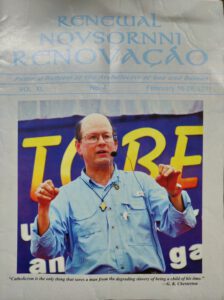
My mind races back to 1977-78, when my siblings, friends and I attended a prayer meeting spread over three evenings, at the Azad Maidan, Panjim. We went with some trepidation since it was a Protestant pastor giving his testimony. What finally clinched it for us was that stirring question “What does it profit a man if he gains the whole world but loses his soul?” which we saw splashed in bold, white lettering across a dark blue banner. Hadn’t a young and impetuous man once been transfixed by those very words? So, reassured by the familiar image of Goenchó Saib, we skipped our playtime and went.
The huge backdrop spanning several columns of the then Albuquerque memorial must have been designed to rope in naive Catholics; its text was ‘gripping’, because we teenagers were groping. In the end the meet did not satisfy us. Notwithstanding the histrionics that mark Protestant gatherings, we did not find the living bread and water that we were seeking; we only found ourselves gazing at Christian teaching through cracked crystal – which is what Protestantism is.
But the good side of it is that it whetted our appetite for manna that only the Catholic Church can give. We realized it was the same old story of not being grateful for what we have until we have lost it – which is the larger point that Stephen K. Ray, popularly known as Steve Ray, drove home at a faith formation seminar titled ‘It’s Great to be a Catholic!’ The event, organized by our Archdiocese at Pilar College Grounds, on 22-23 January 2011, was attended by some two thousand laypeople from across Goa. Given below are highlights of the issues covered by Ray: some treasured doctrines of the Catholic Church; and why dedicated apologists are the need of the hour.
Catholic Treasure
Can we afford to just stand and stare, or be ‘Sunday Catholics’ at best, when there is so much about the Catholic Church to learn and share?
Ray, a former Baptist, began with a moving testimony on how he ‘came into the Catholic Church backwards’. He was attracted by the solidity of the Catholic teaching vis-à-vis the inanity of worship, the skewed interpretation of the Bible, and the relativity of moral teachings, rampant in the Baptist church. Finding it ironical that Catholics, who are privy to doctrinal treasures, “don’t share their faith”, he urged the laity not to regard the faith as something private but rather to proclaim it proudly, for “we are duty-bound to be good evangelists.” He pointed to the USA, where the Catholic Church is growing from strength to strength, in number and quality.
Passing on to ‘Scripture, Tradition and the Magisterium’, all of which the anti-Catholics love to hate, Ray quoted Pope Paul VI, who endorsed the “fifth Gospel” – Israel – which we have to believe in so as to understand Catholic teaching in its entirety. We cannot afford to “throw out the Old Testament, like old bread” because therein lies the foundation of our faith, and of which the New Testament is the fulfilment. Quickly reminding critics who bank solely on the Bible and decry history that the Bible itself is a product of history, the Apologist galloped his way to Caesarea, Phillipi, to uncover the eloquent backdrop to Jesus’ idea of Peter as the ‘Rock’. “If the Catholic flock understood this, none would ever leave the Church,” he said, adding half in jest, “Sheep are stupid, and leave; only the smart ones remain!”
Ray dealt at length with the ‘Papacy: Apostolic Succession and Infallibility’, which is the subject of his book Upon the Rock (Ignatius Press, 1999). He demanded to know why the Papacy is thought by a few to have ended with Peter, when a presidency does not end with the death of a President! He stated that the Pope is ‘the Holy Father’, not because he is sinless but because he is ‘consecrated, set apart for a holy purpose.’ He remarked that, curiously, the Pope is a source of unity for all Christians: for those who believe in him as well as for those who gun for him in unison!
Significantly, the theme inscribed on the backdrop was “You are Peter and upon this Rock I will build my Church, and the gates of Hell will not prevail against it.” (Mt 16: 18) Ray confessed that, as a Baptist preacher, he would pick Catholics like a ripe apple with his standard objection, ‘But where do you find the word Pope in the Bible?’ Now, as a convinced Catholic he counters that with ‘But where in the Bible is it said that you must find everything in the Bible?’ This quip soon turned into a cheery refrain, echoing under the massive blue-and-white pandal: it now serves as an opening rebuttal for budding apologists to consider.
‘Mary’ was another keystone of the Catholic Church that Ray focussed on. To decipher this “great problem for the Protestants”, Ray transported us from the earthly Jerusalem to the New and Eternal City. From the cave (now St Anne’s Church) where Mary was “immaculately conceived” and endured a “tough Jewish life”, we were guided through the awe-inspiring Annunciation and Visitation (7 days’ walk in the Jordan valley, 160 km in 45º C) to the Nativity and the Holy Family’s vicissitudes in Nazareth (to be seen as “God endorsing the dignity of labour”).
Reflecting on the glories of Mary, Ray considered her life post Joseph’s death when Jesus was but 12 years old. It was she who set in motion her Son’s ministry, at Cana, and this established her centrality in God’s plan of salvation. At the time of Jesus’ death “God rewound history”: Eden became Gethsemani and Satan returned as Judas; and whereas at Eden death stuck into the Tree of Life, at Calvary life sprung up at the Tree of Death! And in all of this Mary’s role was unmistakable: her Son became the New Adam and she the new Eve; she revealed herself as the Ark of the New Covenant; was present at the birth of the Church in the Upper Room; and having been assumed into Heaven and crowned Queen (reminiscent of Solomon who enthroned his mother), she remains our supreme intercessor.
Speaking on ‘Eucharist: Source and Summit of Catholic Life’, Ray stated that its definition had remained unchanged for 1500 years until “a bunch of Protestants who called themselves magisterial reformers” began to find fault with it – and then couldn’t come to an agreement on it themselves! This led to hundreds of definitions of “This is My Body… and Blood”. He stressed the need to go back to the typology found in the Old Testament, since it prepares us for the Eucharist, from Melchizedek to Malachi. In the New Testament, Bethlehem (meaning ‘House of Bread’, and where Mary “delivered the Bread of Life”) and the Passover Meal are significant.
Ray pinpointed John 6: 63 as a thorn in the side of the Protestants. He reiterated that the Eucharist is more than just a meal – it’s a sacrifice; and the table of the Lord is more than an ordinary table for that meal – it’s the altar for that sacrifice. Jesus meant it precisely that way – truly, not symbolically – but the Jews were unable to stomach it, and so rejected the Son of God.
Finally, Ray did not mince words on the thorny issue of ‘Salvation’. The first sentence of § 1257 of the Catechism says that “The Lord himself affirms that Baptism is necessary for salvation,” and then the last one: “God has bound salvation to the sacrament of Baptism, but he himself is not bound by his sacraments.” He categorically stated that we gain salvation not through the merit of our good works, or by faith “alone” (as Luther insisted), but by God’s grace and mercy. He picturesquely termed Purgatory as the “front porch of Heaven”. Urging the faithful to believe in Jesus, he noted that the opposite of “to believe” is “to disobey” (Jn. 3: 36).
Historic Milestone
Ray spoke with knowledge and verve, wit and humour. Two question hours were part of the agenda, which saw Ray fielding a wide variety of issues – from the meaning of ‘apologist’ to indulgences; the New Age movements; modest attire; home schooling; ‘property gospel’; contraception; celibacy; tithes; healing services; alternative medicine; and Heaven and Hell. When unaware of a regional peculiarity (viz. the existence of a sect named ‘Believers’ in India) he was eager to learn. He was sharp and answered questions with precision; only once did he fail to disentangle a long list (ecumenism, inter-religious dialogue, etc.), inadvertently, for sure.
Ray is admirable, his style simple and direct, his speech accessible. Above all, he has the force of conviction stemming from an intimate experience of a living God and years of learning and practice – of which have the power to revive a sluggish faith. His approach is “pastoral – not combative or harsh”, as he says of his own book, Crossing the Tiber (Ignatius Press, 1997), a world bestseller, which recounts his momentous decision to turn Catholic.
The Apologist touched our hearts. Braving the heat of the noonday sun, the audience listened with rapt attention, all seated in a shamiana that felt like a makeshift church (but definitely way above any that our ancestors must have witnessed in their primitive, improvised structures). On one occasion, in a post-lunch session, some of us were at the end of our tether, even while the speaker was adjusting the collar mike to begin his talk; and, quite unexpectedly, there came a cool and refreshing breeze – like the Holy Spirit making his presence felt! – and blew away all our troubles.
While, on the one hand, Fr Manuel Gomes’ able interpretation of the talks into Konkani was reminiscent of a similar task that Fr Joseph Vaz undertook for two famous preachers from Portugal at the retreats they conducted in the Goan countryside; on the other, the entire rustic setting of our seminar made us wonder how it must have felt to be listening to pearls of Christian doctrine as they first cascaded from the lips of Our Lord, be it on the mount, by the sea or in the Jewish town.
There is no doubt that Goa was ripe for Ray. We gratefully acknowledge our Archbishop Filipe Neri Ferrão’s personal endorsement of his visit. Not only was this symbolic of a ‘refresher course’ in Catholicism five centuries after the Portuguese missionaries planted the seed; but, more importantly, it was a fitting response, although long overdue, to the historical and contemporary dangers that, from within and without, assail the former bastion of Catholicism in the East. This was perhaps an unprecedented event, and most certainly a historic milestone in the life of our venerable Archdiocese.
In a brief tête-à-tête, our enthusiastic and friendly Archbishop – who, I must highlight, sat through both days – described the faith formation seminar as “refreshing”. He appreciated Ray’s “way of presenting” matters and found it “great to listen to a layman preach”. He had particular regard for him for being “very loyal to the Church.”
For his part, Ray appealed to laypeople and priests alike not to shred the Body of the Church, and endorsed the wisdom of staying under the authority of the Bishop.
The Road Ahead
Here was Apologetics in action, perhaps in a long time! A vivacious Goan apologist, Francisco Correia Afonso, once said something to this effect: We need no apologetic Christians but Christian apologists!
In fact, the Goan priest and lay apologists first emerged a century ago, in the wake of the anti-Catholic and anti-clerical republican regime; they exerted themselves in the service of the Church for five decades, after which there was a lull, because the time had come – as another great convert-apologist G. K. Chesterton put it, albeit with reference to another time and place – “when the Christian [was] expected to praise every creed except his own.”
At Pilar both the Apologist and the Archbishop felt it necessary to pray for a new batch of Defenders to emerge. While Apologetics might seem only a matter of learning to explain and defend our Faith, it is as much a matter of confidence, prayer and commitment. This cannot be a solo venture; the faithful must fervently desire it all together. So can we get our act together? And how do we create the right conditions?
Especially for an apologist, learning should not only mean acquiring general knowledge, but more importantly, acquiring a Catholic perspective on that body of knowledge. For the specialized knowledge required, The Essential Catholic Survival Guide (Catholic Answers, San Diego, 2005) suggests a roadmap beginning with the Bible, and going on to the Catechism, which will help interpret the material of the Bible in the context of what the Church has historically understood it to mean. Then would come a study of the objections made against our faith by anti-Catholic literature and the responses to them. Finally, to successfully rebut both non-Catholics and anti-Catholics one would have to master the arguments put forth by Catholic writers.
But what kind of people would accept the challenge of making time for religious studies and putting them on par with their secular studies? Only they may care to do so who have a profound confidence in God and exercise this virtue amidst the prosaic realities of life. Those of us imbued with materialism, who trust ourselves better than we do God and have no qualms about taking short cuts to ‘success’, oblivious of principles and unmindful of consequences – we are called to do a rethink.
If our preachers and catechists became more spirited, more apostolic, and less bureaucratic, for many confidence in God would not remain just a theoretical proposition; if our small Christian communities interpreted the Bible not as ‘free thinking Catholics’ but strictly as taught by the Mother Church, sects would not flourish; if adult catechesis were taken up with a sense of urgency, our households would become nurseries of apologists; if our faith were nourished beyond Confirmation or the ‘booster dose’ received at Marriage – and if the Sacraments were used optimally – we would never run the risk of having a faithful devoid of faith or confidence in God!
Our learning and confidence can be sustained only by a life of prayer. Whereas we can do nothing on our own, with God there is nothing we can’t do. This requires of us to pray and to undertake all our endeavours prayerfully.
But what does one pray for – why and how? Oh, the fond memories I have of that school catechism that taught us, “God has made us to know Him, love Him and serve Him above all things”! In those days it had perplexed us – ‘But what of my little toys, which I love so much?’ Today that incipient catechism does makes all the sense. If we treasure our moments of interior recollection and cherish the moments of divine inspiration, the joy of Christian learning, confidence and prayer will be effortlessly reflected in our social interaction, to the benefit of all.
A special Apostolate of Prayer, if officially instituted, would help to impress upon our minds the need to pray. The faithful could also be invited to introspect, and to examine issues of the spiritual and material order that they find disquieting and barriers for sanctification. To supplement the questions dropped in the Box at the seminar venue, fresh queries could be solicited from our parish councils, all of which might provide an insight into the mind of our lay faithful.
In due course, learning, confidence and prayer will build character and commitment in our faithful. Then, from them will rise apologists with an unselfish zeal and a spirit of sacrifice, whose habitual posture will not defensive but pro-active they will learn to face public opinion with courage, serenity and self-control; and deal with the adversary with meekness and firmness, capitalizing on the Apostolate of the Presence.
Given that the ways of the world are inimical to the Church, and the secular Press traditionally confuses issues, our Archdiocese could consider setting up a newspaper in Konkani and English to enlighten the people with proper perspectives.
In our day and age it is important to employ all means of communication at our command. This is imperative in faith matters. Hasn’t a lot of water gone down the Mandovi since those sporadic Protestant prayer meetings of the late 1970s? What in yesteryear and to our tender minds seemed innocuous did eventually cause religious indifferentism to grow amidst us. But, thankfully, most of us still believe that it’s great to be a Catholic. And we have no doubt that when the hour strikes the Goan Apologist will be found. We have seen Ray… and we see a ray of hope on the horizon!
(Renovação, Vol. XL, No. 4, 16-28 Feb 2011, as 'Ray of Hope: Reflecting on a Faith Formation Seminar)
Twittharoor
May 17, 2010Indian Airlines,The Great Indian Novel,Pushkar,Twitter,Cattle Class,Gentleman,Reasons of State,Shashi TharoorSocial Media
The word is poised to enter the Indish vocabulary, to mean ‘one who tweets, incorrigibly, almost with impunity’, in the manner of the flamboyant Shashi Tharoor. ‘Twittharoor’ scores over the already existing ‘twitterer’ in that it is evocative, pregnant with meaning, replete with history.
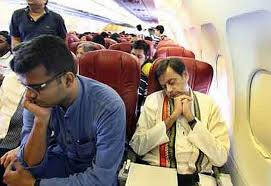

Tharoor’s tweet career shot into prominence rather controversially when ‘cattle class’ is how he dubbed Indian Airlines’ economy class. He made it clear that he had condescended to travel by it in ‘solidarity with all our holy cows’; but to which ‘holy cows’ he was referring always remained unclear. Did he mean to graze the Congress, which was once a ‘cow’? One could say it still is, considering how well its party persons are milking it: so was Tharoor having a dig at them? Or maybe he was thinking of that ubiquitous bunch of vagrants in our streets – and, by extension, those among us who similarly hang out endlessly in open spaces or travel daily by public buses….
If Tharoor only meant to send out a witty tweet, he must have amused his fans in the growing aspirational class across the nation, ever on the lookout for the antitheses of Lalus and Mayawatis. But what was humour for his friends indeed provoked furore among his foes. Furore came particularly when the minister targeted two ‘holy cows’ from our pantheon: Gandhi and Nehru. Didn’t he say people should be working on Gandhi Jayanti rather than staying at home? Far from hurting die-hard Gandhians it severely wounded commuting ‘cows’, infinitely worried about losing a comfy holiday!
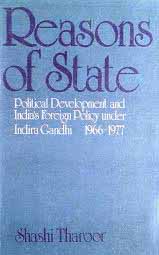 Close on its heels came criticism of Nehruvian foreign policy: here the feisty minister touched upon India’s use of force in Goa, as did one of India’s latter-day unholy cows, gutsy Arundhati Roy, who in sympathy with the Maoists blasted the country’s quickness in annexing lands and putting down popular movements. As the author of a scholarly study on Indian foreign policy, titled Reasons of State, Tharoor probably had many a reason for he stated; but then, cowed down by political bulls, he soon retracted his position. Whether the larger point went rather unnoticed or was deliberately underplayed is not for us to debate now (that can appropriately wait until December 2011); the fact is that argument did not catapult to the headlines as did his critical tweet lines on the newly-tightened visa norms: our minister had been left wondering whether they would actually ‘protect’ security or just make India a ‘less welcoming’ destination.
Close on its heels came criticism of Nehruvian foreign policy: here the feisty minister touched upon India’s use of force in Goa, as did one of India’s latter-day unholy cows, gutsy Arundhati Roy, who in sympathy with the Maoists blasted the country’s quickness in annexing lands and putting down popular movements. As the author of a scholarly study on Indian foreign policy, titled Reasons of State, Tharoor probably had many a reason for he stated; but then, cowed down by political bulls, he soon retracted his position. Whether the larger point went rather unnoticed or was deliberately underplayed is not for us to debate now (that can appropriately wait until December 2011); the fact is that argument did not catapult to the headlines as did his critical tweet lines on the newly-tightened visa norms: our minister had been left wondering whether they would actually ‘protect’ security or just make India a ‘less welcoming’ destination.

Here Tharoor came out as a champion of foreigners – mind you, not simply an ‘interlocutor’ but truly their ‘mediator’! Some months ago he had effectively split hairs but this time around, by his relaxed approach, external affairs flowed seamlessly into his personal affairs – and alas, Pushkar, his femme fatale, true to her name, pushed herself, so hard that ‘external’ and ‘personal’ turned ‘fatal’.

There was a time in the 1980s when I used to lap up the then international civil servant Tharoor’s monthly dispatches for our very own Gentleman magazine. Now it is the Opposition that laps up the fodder for controversy that he provides through his freewheeling tweets. But aside the fact that Tharoor’s spat with a sports honcho actually opened a can of worms, it is my hunch that he had no prior inkling of any sinister plot in the gentleman’s game. The IPL was only a side-show for the wordsmith Tharoor; all that he wanted was to quickly hit on a plot for a promising thriller.
The cricket competition controversy had all the makings of an irresistible reality show; the suave minister crafted the plot by personally creating the moment. Its prospective morphing into a creative work will be a classic case of art imitating life. In it its creator will have the last laugh: besides showcasing his flair for affairs of every hue, he will prove that his tweet, even if indiscreet, is creative. He who quit his UN job will show that he is no quitter; he who frittered away his MEA position will always on twitter stay. He who once lost his bid for UNO’s top post may one day become the secretary-general of an UTO, short for ‘United Twitters Organization’.
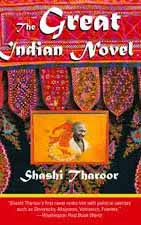
The only story that will remain to be told is of how this diplomat-turned-politician could be so un-diplomatic and politically incorrect. But then, in the tradition of The Great Indian Novel, that ironic adaptation of the Mahabharata that Tharoor penned from a 20th century viewpoint, he can well be expected to do so himself, pioneering a literary genre that may well be called the maha-chotta Bharatiya ‘Twitter Novel’! That will be the crowning glory for India’s foremost twittharoor.
(Herald, 17 May 2010)
Dona Teresinha, as I knew her
April 25, 2010Jorge Meneses,Goa,Carlos Meneses,Fontaínhas,Renascença,Silvia Meneses,Panjim,Marlene de Noronha Meneses,Fernando,Hugo MenesesTribute
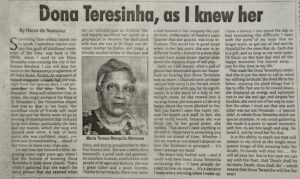
Something from within impels me to speak. I somehow cannot contain this gush of childhood memories of the time, way back in the 1970s, when I used to see Dona Teresinha criss-crossing the city in her Datsun Bluebird. I can still hear her voice in the Renascença programme of All India Radio, Panjim. An exponent of Indo-Portuguese culture that she was, right from her Lyceum days, I can picture her in the play ‘Barco Sem Pescador’. Many will remember that, at times, she singly animated the Mass at St Sebastian’s, the Fontaínhas chapel that was so dear to her heart. Her steadfast circle of friends will recall that she and her family never let go an evening of entertainment that included song and dance, particularly the fado and the mandó, which she sang and danced with verve. A lady of many parts, she was confident, smart, creative and forward-looking… ahead of her times in more ways than one.
Let me now fast forward a little, beginning some eight years ago, when I had the fortune of knowing Dona Teresinha a little more closely. That’s when I gathered that she wasn’t the stern person that she seemed when her car whizzed past us children. She had happily sacrificed her career as a pharmacist to become the dedicated wife that she was to Dr Hugo and devoted mother to Carlos and Jorge, a friendly mother-in-law to Marlene and Silvia, and doting grandmother to their four bouncy kids. She was a meticulous housewife, a good cook and gourmet. An excellent hostess, comfortable with people of all ages and stations, she was a great talker and a good listener. Thanks to her vivacity, there was never a dull moment in her company. Her joie de vivre, emblematic of Panjim’s Latin Quarter that she graced, was truly infectious: This stood her in good stead when, in her last years, she was in indifferent health – indeed in a state that would have some lesser mortal slide down the slippery slope of self-pity.
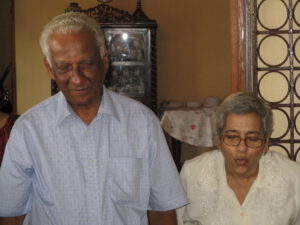
Early on 15th instant, after a pall of gloom had descended upon our household on hearing that Dona Teresinha was no more, I chanced upon an inspirational little story in the Herald, which I wish to share with you for its significance. It is the story of a lady in her twilight years. As she moved into a nursing home, she was seen to be very happy about the room allotted to her. ‘But you haven’t seen the room yet,’ said the health care staff. In fact, she never really would, because she was blind; yet, in her good poise, she replied, ‘That doesn’t have anything to do with it. Happiness is something you decide on ahead of time. Whether I like my room or not doesn’t depend on how the furniture is arranged… it’s how I arrange my mind.’
The brave lady further said – and it could well have been Dona Teresinha exclaiming this – ‘I have already decided to love my room… it’s a decision I make every morning when I wake up. I have a choice: I can spend the day in bed recounting the difficulty I have with the parts of my body that no longer work, or get out of bed and be thankful for the ones that do. Each day is a gift, and as long as my eyes open, I’ll focus on the new day and all the happy moments I’ve stored away… just for this time in my life.’
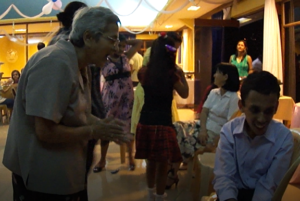
That reads like Dona Teresinha’s credo! And this is just the time to call to mind her edifying fortitude! She lived life to the fullest, enjoying the good things that it has to offer. Not one to be cowed down, she displayed an energy and optimism rare in our day and age; and despite her troubles, she went out of her way to comfort the other. I must say that one such other was our son Fernando – a ‘special child’, to whom Dona Teresinha doled out special attention. At any social gathering she made it a point to spend moments with him, to see him laugh and sing. He loved it, and he loved her for that.
It is this ability to reach out that will remain in my mind as the single most potent image of this amazing lady. No doubt, Fernando will miss her…. We will all miss her. But in her case we can say with the Poet, that ‘Death shall be no more. Death, thou shalt die’ – which means that Dona Teresinha will live forever!
(Herald, 25 April 2010)
Christmas as a state of being
December 1, 2009Spiritual Christmas,Commercial Christmas,Ecological ChristmasChristmas
Have you noticed that the singing or playing of carols before Advent hardly strikes a chord in our hearts? It’s almost like getting into a sweater on a hot summer’s day!
Hearing people say ‘It doesn’t feel like Christmas just yet’ makes one wonder what really gets in the way of enjoying a Christmassy feeling through the year. Yes, maybe we need a few props – the bright star, the colourful decorations, the rustic crib, the delicious home-made sweets, the joyful carols and the festive clothes… even the nippy weather – to get into the mood. But should our feeling, thinking, or being be governed by externals alone?
It’s time we realized that several agencies out there are vying for our time and attention: the merchants, who dangle their goodies before our eyes – pushing us into a ‘commercial’ Christmas; and now the environmentalists, too, wrangling about all that – pressing us into an ‘ecological’ Christmas. Besides, there are the age-old secularists, or say, those without any religious principles, for whom all is grist that comes to their mill…. They are all sources of great distraction for the young and old, the rich and the poor, the educated and the uneducated alike.
For our part, why not respond intently to our basic calling, which is to herald a ‘spiritual’ Christmas? By this we mean giving priority to the life of the spirit, rather than to material concerns; seeking to reconcile with God and to reach out to our neighbour; and giving to Christ the place that rightly belongs to Him in our hearts and minds. At Christmas we are called to truly light up the virtues of faith, hope and charity; it’s a special time to don God’s (and not Santa’s) thinking cap. And then, as we stop to contemplate the face of the Little Babe, Our Lord and Saviour, the worldly delights of a winter wonderland will vanish and overriding concerns about our Planet pale into insignificance.
If we have had fake Christmases in the past, let us put them behind us and move on; let us turn a new leaf, setting sights on a genuine Christmas and a radiant New Year. The tender spirit of December will not evaporate – and thus our world will be a better place – if Christmas isn’t limited to a day; if all mothers become like Mary and fathers like Joseph, and if we all model ourselves on Jesus of Nazareth….
And that’s probably when the singing or playing of carols will begin to strike a chord in our hearts right through the year!
(Editorial, The Stella Maris Bulletin, Vol. 3, No. 2, Dec 2009)
Obama's Nobelity
November 16, 2009Lech Walesa,Alfred Nobel,Angela Merkel,Henry Ford,Nobel Prize,Taliban,Noblesse ObligeObama
‘Fighting for peace’ is a contradiction in terms. This can be resolved by ‘advocating’ or ‘standing up for’ peace. But, mind you, this is no semantic war; the use of words betrays a mindset. ‘Fighting for’ would suggest that peace doesn’t come to us naturally, that it eludes us, that we are peace mongers at best, using the ‘Atoms for Peace’ argument selectively, thus exposing human nature as a wolf in sheep’s clothing!
But this time around it is not so much about ‘fighting for’ peace; the big fight is about the Peace award. The irony: The Peace Prize as an instrument of disquiet! However, not so strange if we consider that Alfred Nobel instituted it to atone for inventing dynamite! But, curiously, today the world stands dynamited into bits and bytes of opinion, with a 1.4 million dollar question in its trail: Is Barack Obama being awarded for what he has done, is doing, or is going to do?
Has the Prize, citing Obama’s extraordinary efforts toward a nuclear arms-free world, international diplomacy, and cooperation between peoples, come ahead of time? Former Peace Laureate Lech Walesa blurted: “So soon? He has not yet made a real input. He is proposing… but he still has to do it all.” And Henry Ford would have said, “You can’t build a reputation on what you are going to do.”
But the point is that Obama has already built quite a reputation for himself. Through his model election campaign, in which ‘change’ was the buzzword, the man battled several odds on his ‘black’ road to the White House. And now nine months into the Presidency, he has created a new climate in international politics and, equally important, a new politics of climate change. Thanks to his world view, dialogue and negotiation have become choice instruments to resolve complex conflicts. His charisma has galvanized the world. To quote Angela Merkel, “Obama has in a short time managed to establish a new tone and a willingness to talk worldwide.”
Granting that the US President has still not been able to fully concretize the envisaged change, could we be as charitable as to recognize that concrete has a certain curing period? If we look at time future as a simple extension of time present, we shall no longer doubt that change is just round the corner. Obama has been an inspirational figure in the face of problems at home and abroad; he has made an impact on the world psyche, giving the people hope for a better future. Of course, he has now to live it out especially in the infernos of Iraq, Israel, Palestine and Afghanistan. His sagacity, intelligence, nobility of purpose and track record of sincerity and hard work will see him through it all. Yes, he can do it!
Some sections of the press have lampooned the choice of Obama for the Nobel Peace Prize; and the Taliban has even suggested that he should have instead won a ‘Nobel Prize for Escalating Violence and Killing Civilians’ (Wonder why they don’t institute a ‘Taliban Prize for Terrorism’!). On the other hand, many have realized that the Prize has come with a price: the pressure to perform, to show the results of his rhetoric, and to live up to the people’s expectations. In this sense, a Nobel Laureate is a modern-day nobleman: if Noblesse Oblige was the creed of the Nobility, responsible action should be the credo of the Nobelity.
Aside his noble intentions, did Obama have Nobel intentions? Members of the former slave race are ecstatic about being catapulted into the New Nobility, but the US President confessed, “To be honest, I do not feel I deserve to be in the company of so many of the transformative figures who’ve been honoured by this Prize.” For sure, he was thinking of Mother Teresa and Nelson Mandela; of Willy Brandt, who got the Nobel for his Ostpolitik; and Mikhail Gorbachev, who early in his own presidency received the accolade for perestroika and glasnost. But uppermost in his mind must have been his political guru Mahatma Gandhi, who was not honoured by the Nobel and so could do it no honour!
It did surprise many that, rather uncommonly, the Prize should have come in between the promise and the performance. Himself “surprised and humbled” by it, Obama put Nobelity in perspective, saying, “I do not view it as recognition of my own accomplishment…. Throughout history the Nobel Peace Prize has not just been used to honour specific achievements; it’s also been used as a means to give momentum to a set of causes. And that is why I will accept this award as a call to action, a call for all nations to confront the common challenges of the 21st century.”
By his rise onto the world stage, Barack Obama set new benchmarks not only for the international community and unwittingly for the Nobel as well!
(This version was published in Renovação, Vol. XXXVIII, No. 22, 16-30 Nov 2009, under the title 'Novel Nobel'; the same middle, titled 'Obama's Nobelity', with minor differences, was earlier published in Herald, 14 Nov 2009)


